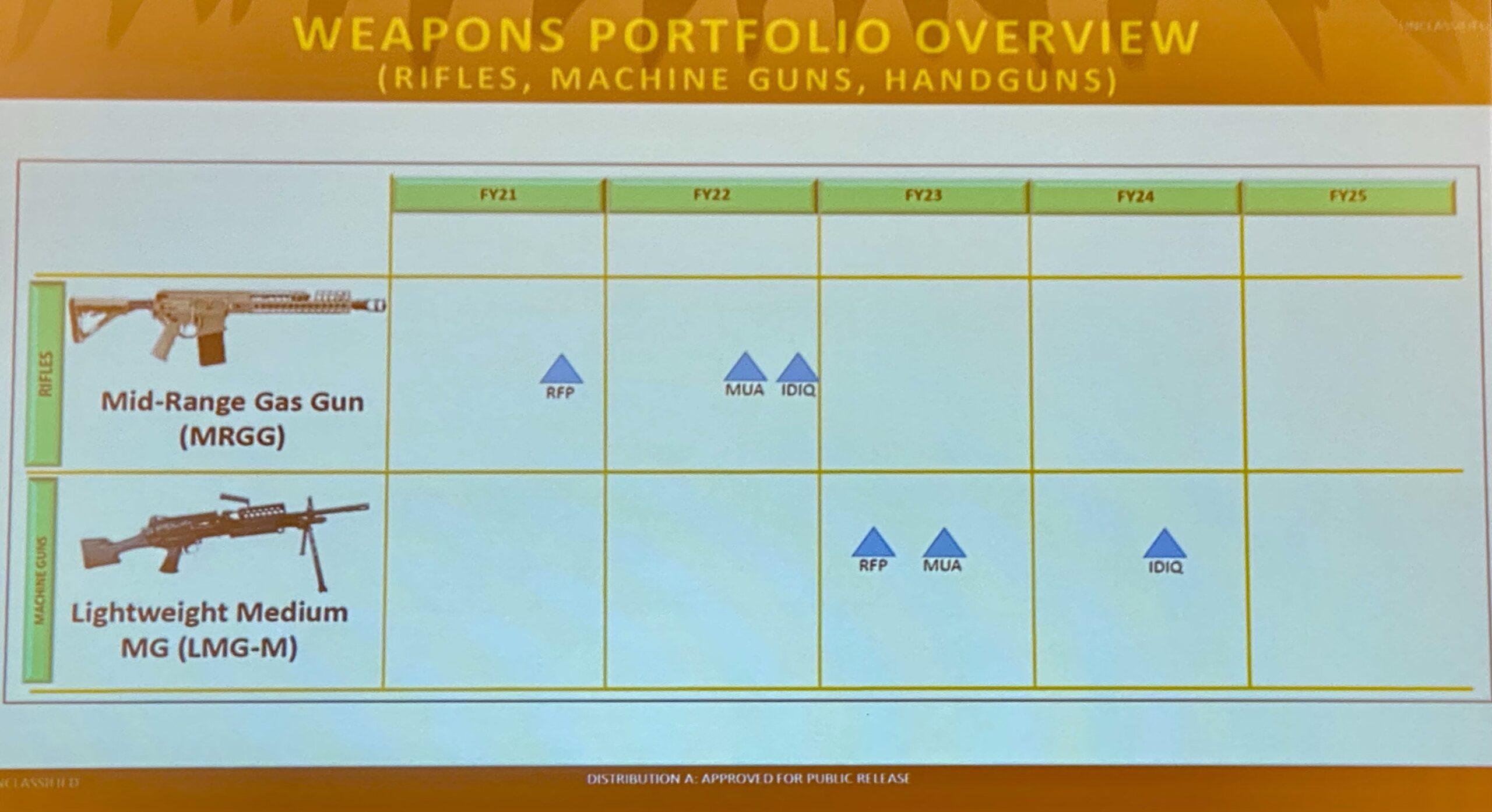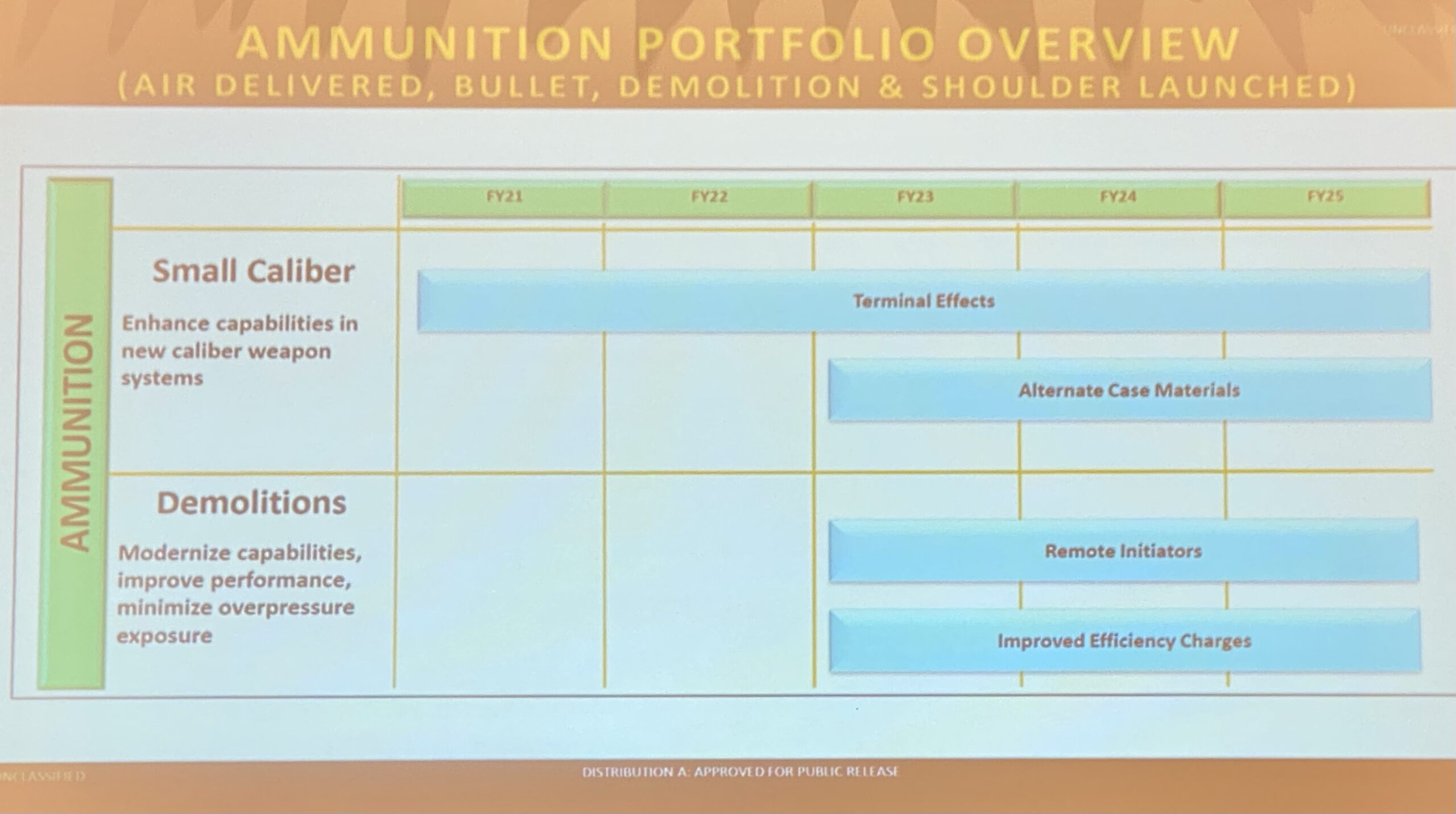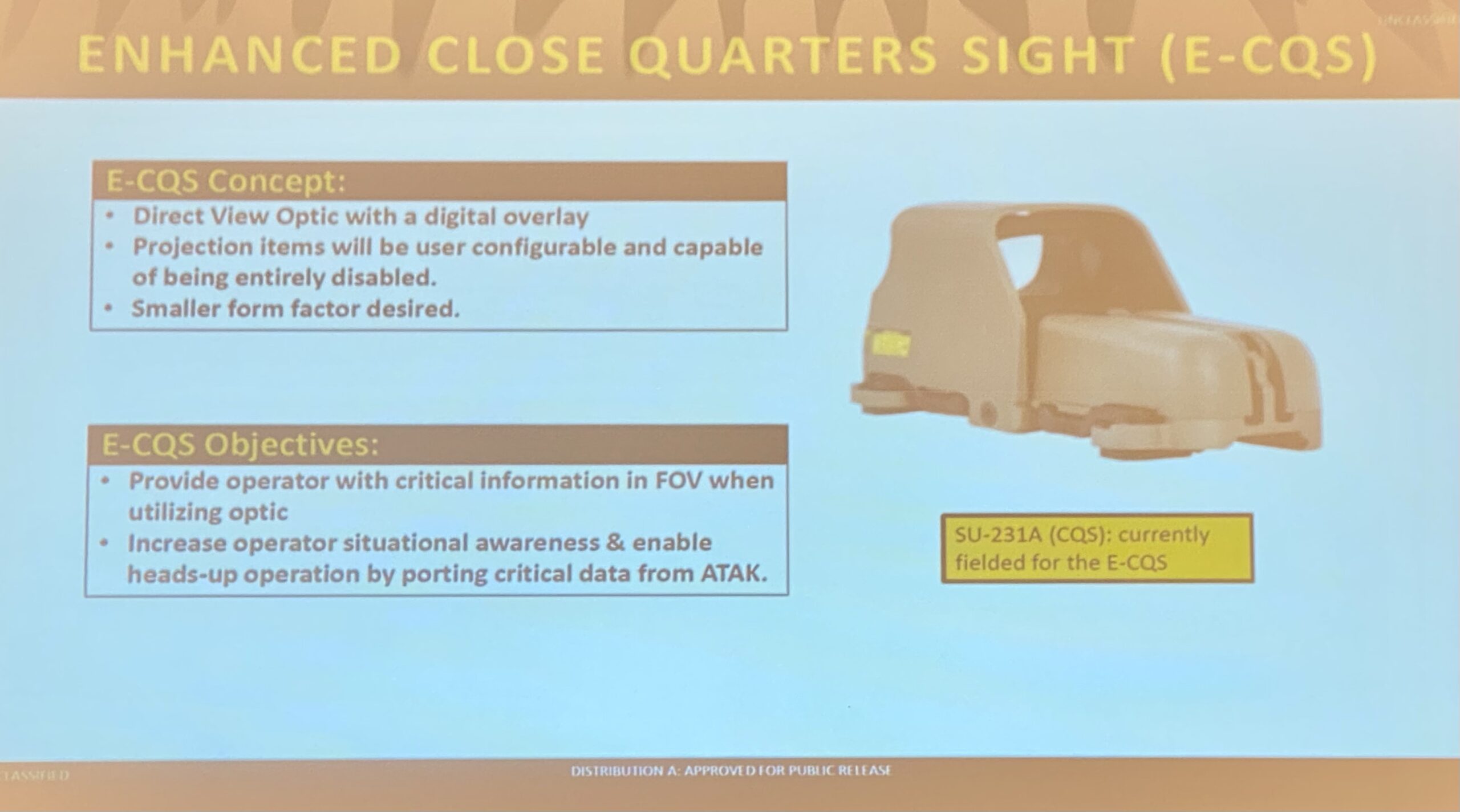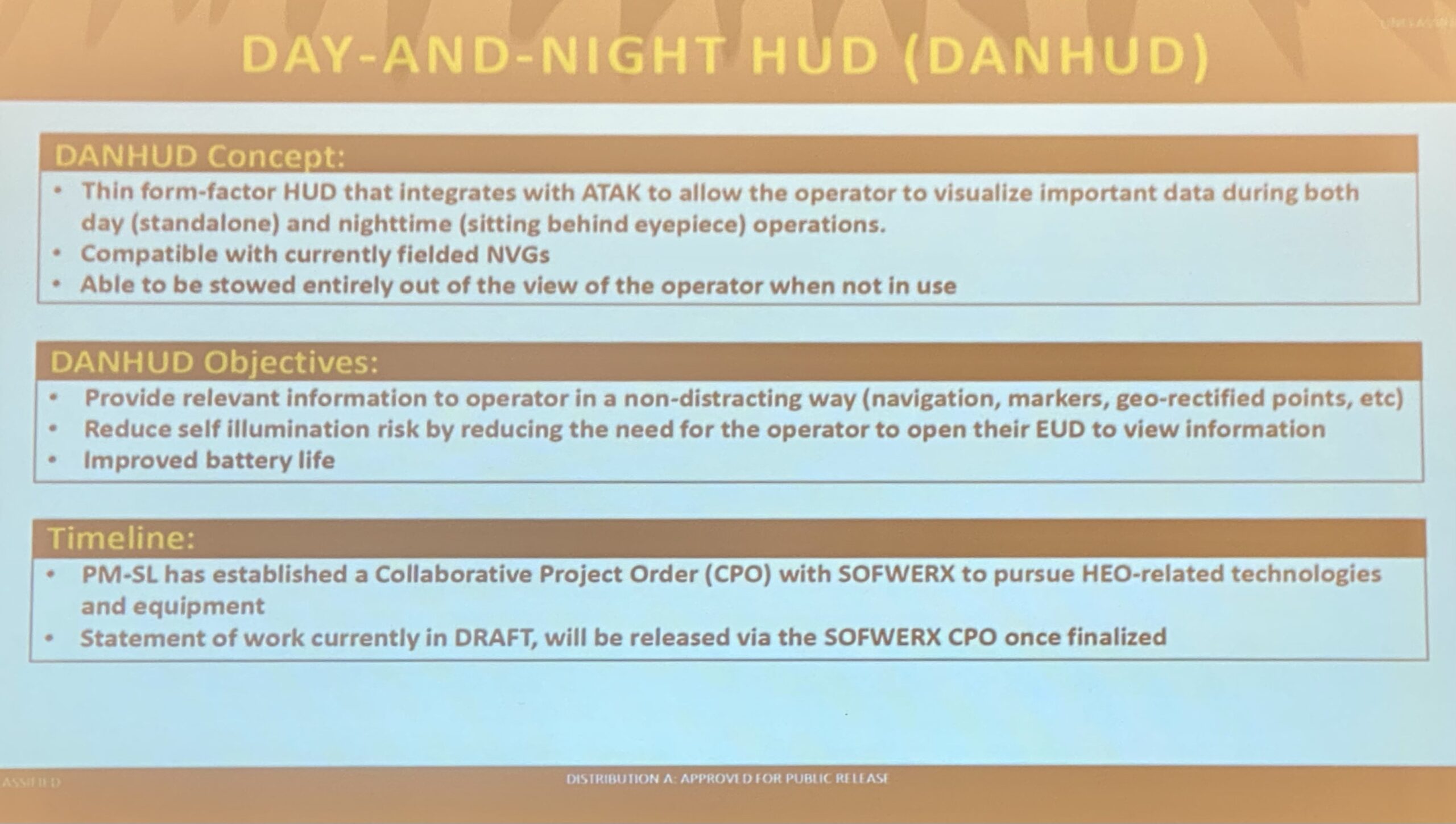There wasn’t a lot briefed this year as USSOCOM has decided to go quiet with industry, over concerns adversaries may determine and exploit their capability gaps. This strategy may prove challenging while trying to fill those gaps, particularly the more exquisite requirements.
The Program Executive Office Special Operations Warrior team only briefed a few immediate items of interest.
There are currently two open weapon competitions, the Mid Range Gas Gun and Light Medium Machine Gun and both address overmatch concerns.

The 6.5 Creedmoor MRGG consists of two variants, Assault and Sniper Support. We introduced the FN America candidates during last week’s Modern Day Marine coverage. This is essentially a do over of an earlier attempt at selecting a weapon.
I asked PEO SOF Warrior, COL Anh Ha if SOCOM planned to continue to invest in 6.5 CM considering the recent Army decision to adopt 6.8x51mm Common Case Ammunition. He responded that the command’s concern is overmatch and that the planned to proceed with 6.5 CM but would monitor the Army’s 6.8 efforts.
Although not briefed on slides SOCOM plans to move ahead with the Lightweight Assault Machine Gun program. However, I doubt will survive the budget axe once an Assessment Director takes a look at it. The XM250 will be a service common beltfed solution meaning MFP 2 funds pay for it rather than the MFP 11 SOF budget. If it is determined that it still must be chambered in 6.5 CM, the manufacturer has been demonstrating a barrel swap from 6.8 to 6.5. The only cost to SOCOM in that case would be the SOF unique barrel.
The LMG-M is a beltfed machine gun which fires a .338 Norma Mag cartridge offering the range of an M2 at less than the weight of an M240. Instead of area targets at that range, the gunner will be able to engage point targets with semi or full auto fire. Although there are multiple small arms updates across DoD, this program is the single most important capability on the horizon.

As far as ammunition goes they are constantly in a state of improvement of various small arms calibers, concentrating particularly on terminal effects. In FY24 they will begin to examine alternative case materials.

The Enhanced Close Quarters Sight (E-CQS) is a planned replacement for the SU-231A holographic weapons sight. This new capability will add a digital overlay which will port data from Android Team Awareness Kit and can be turned off when not needed.

Last, but not least, the proposed Day and Night Heads Up Display (DANHUD) will integrate with the ATAK and transition the operator’s focus from the End User Device to the battelspace around them, increasing situational awareness.


I had the opportunity to shoot the LMG-M at ISOF. It is a VERY impressive system.
Again the XM250 proves to be the real prize from NGSW
Anybody knows what is the considered barrel length of the MRGG assault variant? 13 in like the NGSW? 16 inch?
I believe MRGG-A was 14.5 and MRGG-S was 20 inches.
What do they mean by “overmatch”
Take a look at this earlier article. Not an expert but my understanding is that overmatch w/ respect to small arms is usually about having overwhelming advantages in distance, accuracy, identification, etc. Afghanistan’s terrain demonstrated issues w/ overmatch where 7.62x54mm PKM and SVD fire outranged our 5.56 capabilities.
https://soldiersystems.net/2017/04/04/jim-schatz-a-path-to-overmatch-next-generation-individual-weapon-system/
Thanks for this update. I had been wondering what had become of SOCOM’s MG 338.
Makes sense, though, that between the MRGG-A, MRGG-S, LMG-A, and LMG-M, the most important seems to be LMG-M. I guess if push came to shove, SOCOM could live with using XM5’s (MRGG-A), M110K1/Mk20’s (MRGG-S, or even use 6.8 SIG if their ballistics claims are on point), and XM250’s (LMG-A) but there’s no other programs/offerings that could really fill the M240 to M2 role of the LMG-M, huh?
No this IS the program that all of the services will eventually adopt.
Ohh, oh wow. Some services might come up w/ their own specific requirements afterward but the plan is that once SOCOM chooses the platform, the other DoD branches will adopt it as well? (or they’d have to have some darn good reason for not using SOCOM’s choice and asking for funding for their own LMG overmatch kind of program?)
The vision is that it follows the example of ASR.